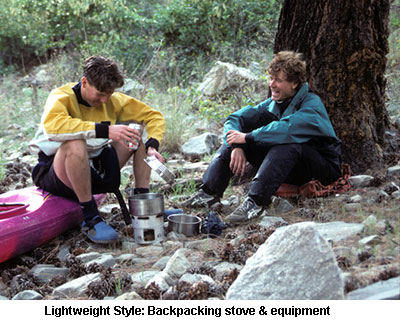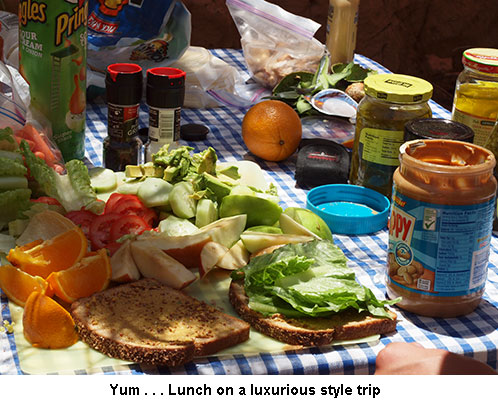By
Ron Watters
From The Whitewater River Book: A Guide to Techniques, Camping and Safety. Copyright 1982 by Ron Watters. Minor revisions 1998.
Note that the Whitewater River Book is now out of print, but we are putting together an updated, on-line version of the book which will be available on our web page. Other chapters available include: Kayaks and Other Whitewater Craft. and Rafts and Drift Boats.
The portal of the gorge lay ahead of us. Floating on quiet water, we could not mistake the great gash in the towering walls where the river disappeared. It was the entrance of the canyon that we had had on our minds since the beginning of the trip. We had no idea of what type of white water we might encounter on this portion of the Tatonduk River, located in a remote part of the Yukon Territory in Canada. No one before us had ever run it.
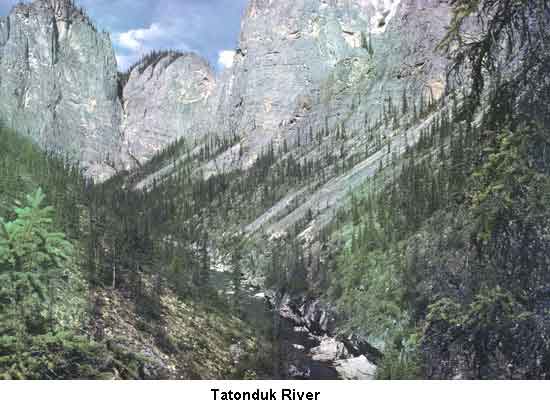
My boating companion, Jerry Dixon, and I pulled our kayaks up on shore at the entrance to the canyon. We worked our way on and around cliffs and across talus fields, scouting the rapids in the river below. The first part looked good: some class IV water, but nothing that we could not handle in the maneuverable, inflatable kayaks, specially designed with a covered deck and a fiber glass cockpit to keep out splashing water.
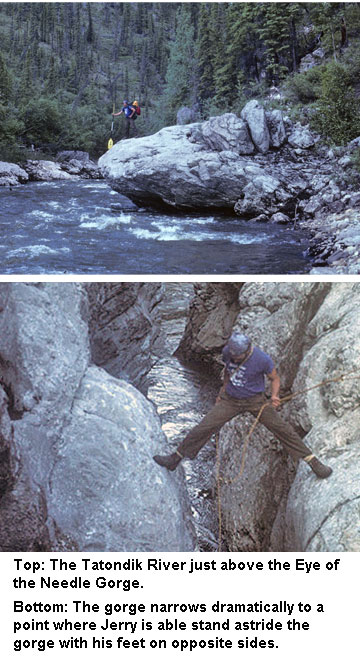 We hiked on, finding more runnable rapids but no suitable place to stop between rapids. The canyon walls plunged straight into the river and in some places overhung the water. We scoured the sides of the river looking for a break in the walls, but we could not find a single weakness where a kayak could be beached and we could get out.
We hiked on, finding more runnable rapids but no suitable place to stop between rapids. The canyon walls plunged straight into the river and in some places overhung the water. We scoured the sides of the river looking for a break in the walls, but we could not find a single weakness where a kayak could be beached and we could get out.
Then the gorge narrowed dramatically into a twisting slot not much wider than a doorway. A huge pile of torn and splintered logs and driftwood had lodged against the canyon walls, forming an imposing, spiny plug rising fifty feet above the water. The river was so narrow here that Jerry rapelled to the edge and straddled the canyon with feet on opposite canyon walls.
Even though the river was runnable to this point we could find no place where we could get out of our boats to carry them around the huge driftwood plug blocking our run through the gorge. We were left no choice but to portage the entire two-and-a-half-mile stretch of the canyon.
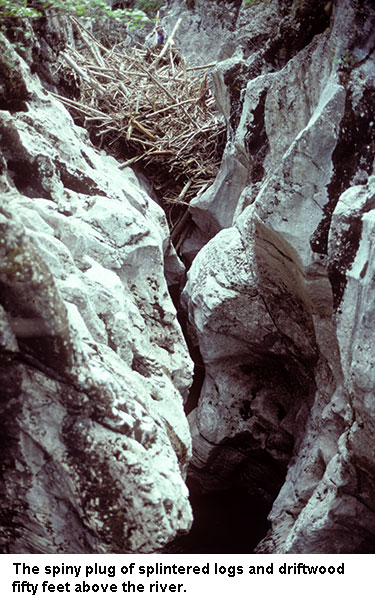 Fortunately, the equipment that we had chosen was suitable for the river. From our aerial reconnaissance we had known that long portages might be required. The inflatable kayaks could be deflated and, along with their fiber glass seats, stuffed into a pack for the long, difficult portage across steep, loose-scree slopes, dense and tangled brush, and exposed, precipitous cliffs. Even with our lightweight equipment, the portage took two and a half days to complete. With hard-shelled kayaks or inflatable rafts, the portage would have been many times more arduous.
Fortunately, the equipment that we had chosen was suitable for the river. From our aerial reconnaissance we had known that long portages might be required. The inflatable kayaks could be deflated and, along with their fiber glass seats, stuffed into a pack for the long, difficult portage across steep, loose-scree slopes, dense and tangled brush, and exposed, precipitous cliffs. Even with our lightweight equipment, the portage took two and a half days to complete. With hard-shelled kayaks or inflatable rafts, the portage would have been many times more arduous.
Choice of equipment, then becomes an important consideration when planning multi-day river trips. The following section looks more closely at this aspect of planning.
Styles of Craft
Whether you plan a trip on a remote river in the Yukon Territory or a river close to home, you will want to choose the craft you float and the type of equipment you carry to match the river. For the purposes of this book, let's consider two basic "styles" of running rivers--lightweight and luxurious--falling on opposite ends of a spectrum. The type of river you plan to run and how much comfort you wish to have will determine the style.
Lightweight Style. The type of craft used in this style includes light, small inflatable rafts, kayaks, canoes, and other small inflatable boats such as inflatable kayaks.
Accessory camping equipment carried along includes lightweight sleeping bags, nylon tents or tarps, and other equipment that a backpacker commonly would use. Food consists of freeze-dried suppers, and lightweight lunches and breakfasts. Cooking is done on small backpacking gas stoves, or if it is environmentally acceptable, over a campfire with light cooking gear. Equipment is carried in waterproof vinyl or rubber bags or packs.
Types of trips in this category include self-contained kayak trips where everything for the trip, including food and gear, is carried in the kayak. A self-contained trip in a hard-hulled white-water kayak is the ultimate means of running white-water rivers. Boaters using this method have run extremes in white-water difficulty in remote areas.
One of the most famous river journeys in a self-contained kayak was done by the late Walt Blackadar, a physician from Idaho. He challenged the enormous, turbulent, unrelenting rapids of Turnback Canyon on the Alsek River in northern British Columbia. He tried to interest other good kayakers in accompanying him, but all readily turned down his off offer when they learned of the expected 50,000-cfs flow of violent water crashing between canyon walls on a river never run before.
Blackadar, carrying all his gear, including his familiar plastic bottle of vodka, successfully ran the river alone.
If you are interested in Walt Blackadar's journey down the Alsek River and his other river adventurers, a new edition of my book Never Turn Back is now available. It has received some very good reviews. Here's more information:
Blackadar's trip is on the far end of the spectrum of white-water journeys and most boaters find great enjoyment running rivers far less difficult than Turnback Canyon. Blackadar's use of the self-contained kayak, however, is an excellent method of doing river trips. Equipment is light and honed to the bare minimum, and a group of kayakers working together efficiently can cover a lot of ground in a day.
Other types of trips that fit in this category include lightweight wilderness canoe trips, especially those journeys that include long portages over trailless terrain. Boaters using small (approximately less than twelve feet in size) inflatable rafts and other small inflatables can incorporate this style to run rivers. The inflatable kayaks we used in the Yukon Territory were perfectly suited for the type of river we ran.
The lightweight style is used for exploring rivers in remote territories as well as for running small, rocky rivers where lightness and maneuverability are paramount. Some boaters use this style for any river, small or large, because to them it is a way of trimming down to the raw essentials and challenging nature in a simple, meaningful way.
Luxurious Style. This style includes all forms of white-water craft, including the largest of inflatable rafts. All of the smaller craft--kayaks, canoes, and inflatables--require a sizable raft for support to carry all the equipment.
Equipment carried on luxury trips can consist of just about anything someone might take with them on a car-camping trip, minus the trailer. Large, heavy tents, sleeping bags, clothing, and even cots for people who do not like to sleep on the ground may be carried. Big stoves with large propane tanks may be used. If cooking is done over fires, large, metal fire pans are utilized to contain the ashes. Meals on such trips can be anything prepared at home, or even what you might find in the finest of restaurant.
Fresh vegetables, fruits, and meats are carried in coolers packed with ice. Cooking is done in the heaviest of cookware: cast-iron ovens and pans. Heavy boxes of metal or wood are used for storage of gear and food. Some people on luxurious trips take electric pumps for bailing out water in boats, lawn chairs in which to relax by the river, and volleyball nets for recreation.
For this style of trip, the river must be large enough in volume to float larger inflatable rafts--thus, it is a popular style on larger rivers that usually do not have portage. If there are portages, the task of carrying boats and equipment is not pleasant. This style is particularly enjoyable for kayaking. All the food and overnight gear is carried on the rafts, leaving the kayaks light and maneuverable for pleasurable river running.
Some wilderness purists shun the invasion of modern conveniences and petty comforts on wild rivers. Others, however, incorporate both worlds in their repertoire of river experiences: on one trip, struggling down a remote, little heard-of river with a minimum of equipment, yet on the next trip, kicking back in a comfortable inflatable raft, tossing Frisbees back and forth with a neighboring boat while holding onto drinks chilled with ice.
The equipment that you will have to organize and take on your overnight trip will depend on the style you choose. Obviously the light weight style is the easiest to organize. Luxurious trips with fresh food and mountains of equipment can turn into a planning nightmare. Many trips fall someplace in between the lightweight and luxurious extremes.
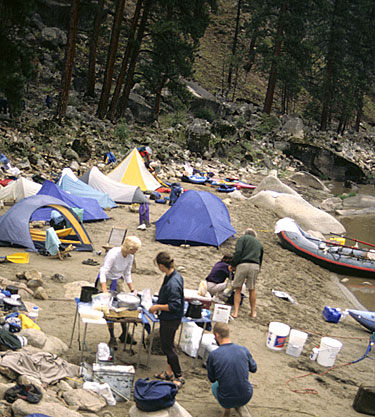
Planning--First Steps
Some trips do not require much advance planning. If you know the river, it is merely a matter of throwing the equipment together and driving off to the river for the day. Other trips, however, require planning, beginning a week, maybe even months, in advance.
Because the multi-day trip demands more preparation than others, let 's take a closer look at it.
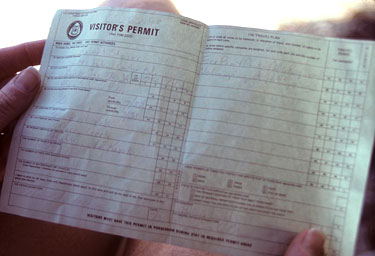 Regulated Rivers. Some rivers have become so popular that the great numbers of people using them are causing problems. On popular day stretches, boats may crash into each other in rapids and kayaks may wait in lines to play at certain rapids. The most serious problems occur on rivers where overnight and multi-day trips take place. On such rivers there are only a limited number of campsites, which get used time and time again. Vegetation is trampled, campfire scars abound, and human waste can cause sanitation problems. In fact, researchers on the Colorado River found that before human waste regulations were instituted, a person with a small wound on his foot could become infected with gangrene by walking across a heavily used camping beach.
Regulated Rivers. Some rivers have become so popular that the great numbers of people using them are causing problems. On popular day stretches, boats may crash into each other in rapids and kayaks may wait in lines to play at certain rapids. The most serious problems occur on rivers where overnight and multi-day trips take place. On such rivers there are only a limited number of campsites, which get used time and time again. Vegetation is trampled, campfire scars abound, and human waste can cause sanitation problems. In fact, researchers on the Colorado River found that before human waste regulations were instituted, a person with a small wound on his foot could become infected with gangrene by walking across a heavily used camping beach.
To minimize environmental impact, many land agencies have been forced to develop regulations to help protect the river. The most important regulation that will affect your group on such rivers is whether or not there is a permit system.
On rivers with permit systems, you will have to apply in advance to obtain a permit. Some of these rivers have a lottery system by which names are drawn out of a hat to determine who runs the river. The important thing is to find out the various procedures involved in obtaining a permit. You will want to write far in advance, twelve months is not too early.
American Whitewater has an excellent list of rivers which require permits and links for more information: AW Permit Page
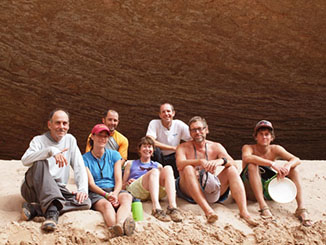 Assembling the Party. The group accompanying you may range from one other friend to a dozen or more people. Try to arrange trips with smaller groups--no more than a dozen. You will have fewer planning hassles, the trip will run more smoothly, and in many cases, a smaller group will cause less damage to the river's environment.
Assembling the Party. The group accompanying you may range from one other friend to a dozen or more people. Try to arrange trips with smaller groups--no more than a dozen. You will have fewer planning hassles, the trip will run more smoothly, and in many cases, a smaller group will cause less damage to the river's environment.
In addition to your own considerations, some rivers that are managed by a governmental agency may require you to keep the party under a certain size.
If you are initiating a trip in which each of the party members runs his own boat--a kayak, canoe, or small inflatable--then everyone in the party should be sufficiently experienced for the difficulty of the river you plan to run.
On inflatable raft trips where the rafts are run by one person on the oars, inexperienced people can ride as passengers. On easy stretches of the rivers, the passengers can take turns on the oars and gradually learn how to run the boat. In this way you can put together a party with both experienced and inexperienced people.
 Dispersing Information. Get your party together far in advance of the trip. Talk over dates, equipment, costs, and so on. Delegate duties. For instance, if you are short on boats, put someone in charge of renting or borrowing additional boats. If some of the party members are from out of town, send them a letter detailing the plans.
Dispersing Information. Get your party together far in advance of the trip. Talk over dates, equipment, costs, and so on. Delegate duties. For instance, if you are short on boats, put someone in charge of renting or borrowing additional boats. If some of the party members are from out of town, send them a letter detailing the plans.
Preparation Day. A procedure followed by some float parties is to tack on at least an extra day at the beginning of the trip--before driving to the river--to spend in town, buying food, packing vehicles, and so on. The nature of a noncommercial trip is to involve everyone on the trip, and all people should help with the preparatory duties as well as river duties. This process adds a day that people may have to include in their vacation, but it makes them an integral part of the trip from start to finish. Additionally, with everyone's help, the packing, the loading, the buying of food, and the cleaning up all go much faster.
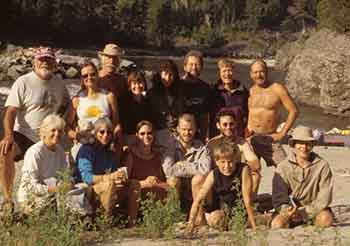 Length of Trip. Find out how long it normally takes others to run the river and adapt this amount of time to your plans. Give yourself plenty of leeway. The actual length of time that you will need on the river depends on many factors, such as how high the water is, how many (if any) portages must be made, and how many problems the party has on the journey.
Length of Trip. Find out how long it normally takes others to run the river and adapt this amount of time to your plans. Give yourself plenty of leeway. The actual length of time that you will need on the river depends on many factors, such as how high the water is, how many (if any) portages must be made, and how many problems the party has on the journey.
Inflatable rafts in normal water conditions commonly run fifteen to twenty miles a day. A small, self-contained kayak party may average twenty-five or more miles a day.
I generally like to schedule less than the above average. That way the trip is conducted at a more relaxing pace, people become more acquainted with the river, and there is more time to hike. Putting together a multi-day trip requires a tremendous amount of energy, and once you actually get on the river, it is nice to slow down and savor the experience.
On a typical raft trip, I may average ten miles a day. On a kayak trip friends and I do on the Salmon River in Idaho, we average only three to four miles a day for the first half of the journey. This part of the Salmon is scenic and has many good rapids, ideal places in which we can play in kayaks for hours. The weather usually is warm and days are easygoing and lazy--just the way a vacation should be.
Trip Costs
Trip expenses may be fairly simple, as when you and your friends drive off and run a day's stretch on a river. Or expenses may be complicated, as when twelve-member groups embark on a two-week trip.
For efficiency, groups usually pool their money. Before leaving on a trip, make a cost estimate considering the following:
-
How many vehicles will be used? What is the distance from home to the river and back? What is the distance involved in the shuttle? From the total trip mileage, estimate your gas costs.
-
If you use the services of a commercial shuttle driver, add his expense.
-
Based on the number of people in your group, estimate the cost of food for the entire trip.
-
Add any expenses you may have in renting equipment, such as rubber boats, coolers, life jackets, tents.
-
Figure expenses for group supplies. Duct tape is a common group expense since almost everyone uses it. Group repair supplies may be purchased, as well as such things as cooking pots or fire pans. If you have to fly into the river, add that expense. Some groups will pay individuals if damage occurs to rafts carrying group equipment.
Figure up the cost conservatively and then add some more to your total figure. Always collect more than you possibly will need. At the end of the trip it is an easy task to refund money, but if you end up spending more than you collect, it sometimes can be an unpleasant task to collect from everyone after the trip is finished. If you are initiating the trip, you do not necessarily have to be the person collecting the money. Have someone else do that to spread out responsibilities.
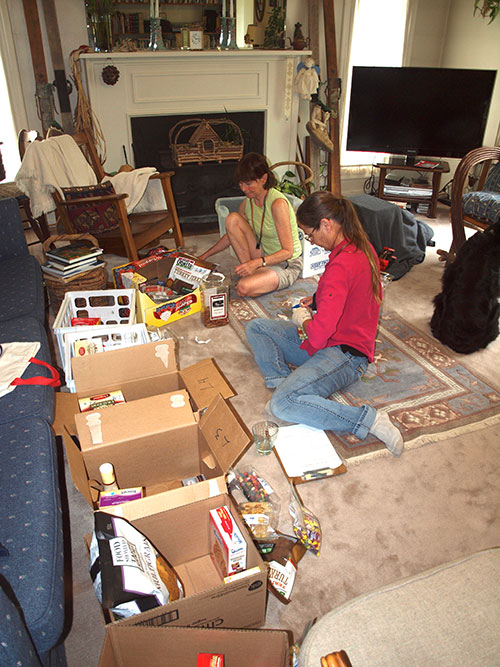
I usually stay free from handling money. When my partner and I first started our mountain shop, which sells white-water equipment, one of our part-time helpers used to find dollar bills and odds and ends of change lying around the store on boxes, on top of packs, or forgotten on shelves. The money was from merchandise I had sold to customers, and I absentmindedly had gone on to help other people, not putting it in our money box. After I tell members of my party that story, I usually do not have to worry anymore about collecting group money. Someone always readily volunteers.
It is a good idea to collect a deposit early in the planning process. The deposit will give you a good idea of how many people are going on the trip so that boats may be reserved and lists of the members of the party can be sent to governmental agencies in charge of the river if they require it. When people put money down on something, it makes their commitment more serious.
The Group
For multi-day trips the number of people who are planning to go on your trip probably will change. I have seen trips change several times the month before we left. If it becomes a major problem, you may want to make the deposit nonrefundable. Even with such a deposit however, you still need to make your initial plans flexible to adjust for a different-sized group when you finally take off on the trip. Vacation schedules change, someone may get ill before the trip begins, and a whole host of other problems can completely alter lists of parties.
If you find that an agency managing the river you wish to run requires complete group lists months in advance, as some do, it is a good chance for you to write and provide input in the way rivers are managed. This is one regulation that is a hardship on noncommercial river runners, and if river managers are going to make any changes, they will have to hear from the users.
Main Group--Planning Session
At some time, you have to get the final group together before the beginning of the trip. Because of the changes that can occur in groups, you may want to have the group meeting a week or as early as two to three days, before the departure date of the  trip. With a meeting close to the time you plan to leave, you will be sure of exactly how many are going. If members of the party are coming in from out of town, this late meeting date will allow them to be involved in the planning. At this meeting, you can divvy up the responsibilities of getting the final things ready for the trip. The following are some aspects to consider at this meeting.
trip. With a meeting close to the time you plan to leave, you will be sure of exactly how many are going. If members of the party are coming in from out of town, this late meeting date will allow them to be involved in the planning. At this meeting, you can divvy up the responsibilities of getting the final things ready for the trip. The following are some aspects to consider at this meeting.
Food. Buying food for multi-day trips can be done in several ways:
-
Everyone can bring his own food and do his own cooking- This method usually is utilized by two- to three-member parties, in which one stove or one fire can be shared as each person cooks his own meal. With larger groups, food usually is bought collectively.
-
One or more members of the group can volunteer to do all the menu planning and go out and buy the food.
-
Another way is to divide into cooking groups of two. Each cooking group plans one or more days of meals. They buy the food and prepare their meals on the river. In this way everyone in the party helps with meal planning, food buying, and cooking.

Collecting Money. At your last meeting, collect the rest of the money. Some of it then can be given to people who are buying food and the rest can be put in travelers checks for paying gas expenses to and from the river.
Personal Equipment. With the party, go over a list of personal equipment and be sure everyone has adequate equipment and clothing for the trip (see multi-day river trip equipment list).
Expectations and Safety. From the very beginning it is important that everyone in the group knows that he is expected to help in all the duties that are necessary in conducting a river trip. Fires need to be built boats loaded and unloaded, campsites picked up, and so on. When everyone helps, the trip runs more smoothly and everyone has more leisure time.
All party members also should realize before they go on the trip that there are potential dangers involved in white water. From a legal standpoint as well as a moral one, you and other knowledgeable people going on the trip should not create a false impression of the trip, making it sound like it is free from all dangers. Be objective and honest in your evaluation of what dangers are involved.
After a quick review of the dangers, stress the importance of safety on the trip. A trip is only as safe as all the individual members make it. Everyone has a personal responsibility of doing his utmost to be safe.
Environment. At this meeting, remind people of the appropriate techniques to minimize environmental impact (see the chapter about camping). Explain the use of fire pans to prevent damage to campsite. You may follow a special procedure of handling human waste. Remind people not to put soaps in wild, unpolluted rivers. These procedures and others are essential to keeping users from destroying the river environment.
Leadership
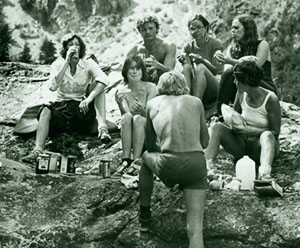 On river trips with guides, it is fairly straightforward as to who is in the leadership position--the guides. On noncommercial trips--the type of trip this book is all about--there may be a designated leader, but more often than not a democratic leadership develops. Leadership among equally experienced boaters is shared. The various decisions are made democratically by expressing differing opinions in front of the group so that everyone understands.
On river trips with guides, it is fairly straightforward as to who is in the leadership position--the guides. On noncommercial trips--the type of trip this book is all about--there may be a designated leader, but more often than not a democratic leadership develops. Leadership among equally experienced boaters is shared. The various decisions are made democratically by expressing differing opinions in front of the group so that everyone understands.
In certain situations where the group has to make important decisions, such as whether or not to put in a river in high flows, inexperienced people should give more weight to the opinions of the more experienced boaters in the group. Democracy on river trips works well as long as people maintain an easy-going attitude and are willing to give and take. This way of approaching leadership allows personal freedom in a sport that, by its own nature, essentially is free.
Transportation
If you are planning a lightweight-style trip, transporting equipment does not present too many problems. For luxurious-style trips, however, getting to and from the river can be a major undertaking. Different means are available:
-
Cartop carriers normally carry kayaks and canoes, but a good sturdy model also can be used for carrying oars, paddles, boat frames, and odds and ends of gear.
-
Pickup trucks, vans, and sport utilities are handy for carrying gear. Be careful not to load vehicles past their recommended allowance. We did that to a pickup once and it burned a quart of oil every fifty miles. By the time we coaxed it back home, the engine was ready for a major overhaul.
-
Trailers can be rented or borrowed and are especially helpful for carrying bulky boats and frames to the river.
On luxurious trips where personal vehicles are subjected to much wear and tear, you may want to consider reimbursing some amount per mile to the vehicles' owners. It seems that if anything can go wrong on a river trip, it invariably goes wrong with the vehicles. Good procedures dictate caravaning in case problems develop.
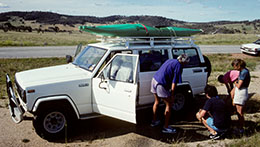 On one trip I did last summer, none of the three vehicles was together while traveling home from the river. The pickup truck in which I was riding carried most of the group gear and towed a large trailer, full of kayaks. Approximately 250 miles from home, the transmission went out on the truck and we were left stranded along the highway without the rest of our party to help. As it was, we were lucky to find someone to lock up our gear in a garage while the vehicle was repaired in a nearby town.
On one trip I did last summer, none of the three vehicles was together while traveling home from the river. The pickup truck in which I was riding carried most of the group gear and towed a large trailer, full of kayaks. Approximately 250 miles from home, the transmission went out on the truck and we were left stranded along the highway without the rest of our party to help. As it was, we were lucky to find someone to lock up our gear in a garage while the vehicle was repaired in a nearby town.
Driving a rented car, we were nearly 100 miles from home when we noticed a deserted vehicle parked off the side of the road. As it seemed vaguely familiar, we stopped to take a closer look. It was one of the other vehicles from our trip, which we found out later also had broken down and left the vehicle's occupants stranded. For that trip, the score was two out of three vehicles broken down. The following week while some friends were on a river trip, all three of their vehicles broke down.
One last comment about traveling: Be sure everyone knows where you are going. Some other boating friends drove off one weekend to run a desert river. The put-in was located somewhere out in a maze of roads crisscrossing the desert. The two vehicles they drove became separated and finally, in exhaustion, one of the groups stopped to get some sleep. The problem was that their sleeping bags were carried in the other vehicle. To make it through the chilly desert night, one fellow curled up in the cramped Volkswagen and another climbed into the canvas bag that carried the rubber raft. They never found the river and finally returned home, much to their chagrin and the amusement of their friends back home.
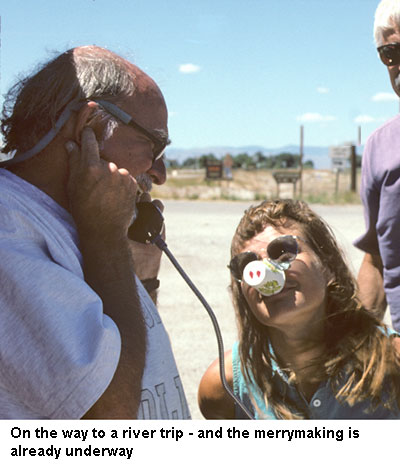
Solo Boating
By far the safest situation on a river trip is going with two or more people. On some difficult rivers, it is better to organize a party of at least four or five boaters so you have extra people to help if you run into problems. It is particularly important to adhere to this general rule when you are beginning and learning about white water.
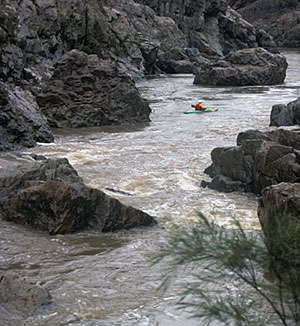
Occasionally, some people will boat rivers alone. It goes against what most books advise, but I feel strongly that a person with many rivers find many days of experience under his belt can have rich and rewarding experiences boating alone. (One of the best personal descriptions I have read of solo kayaking is contained in Whit Deschner's Does the Wet Suit You?).
There is no doubt that solo boating is not so safe as boating with others, and thus the person who ponders boating alone must fully understand that he is greatly increasing the risks. If he makes the choice, he should never expect a rescue if he runs into trouble. If the solo boater finds himself injured, there is little chance of help anyway. It is this additional risk that makes the solo trip a magnificent experience, yet in the case of an accident, a grim defeat.
I have boated alone on Alaskan and Canadian rivers. Scenes come to mind of paddling to shore, seeing fresh grizzly bear and wolf tracks. One time I kayaked alone on a river in the southwestern United States. Along one stretch in the early morning, a snowy egret repeatedly landed and flew in front of me for numerous miles. When I finally stopped to stretch out on the sun-baked sand near where I had last seen the egret, I found a falls of crystal water falling free from a cliff above the river. A slight breeze blew a veil of water across the deep blue of the sky, creating a rainbow against it.
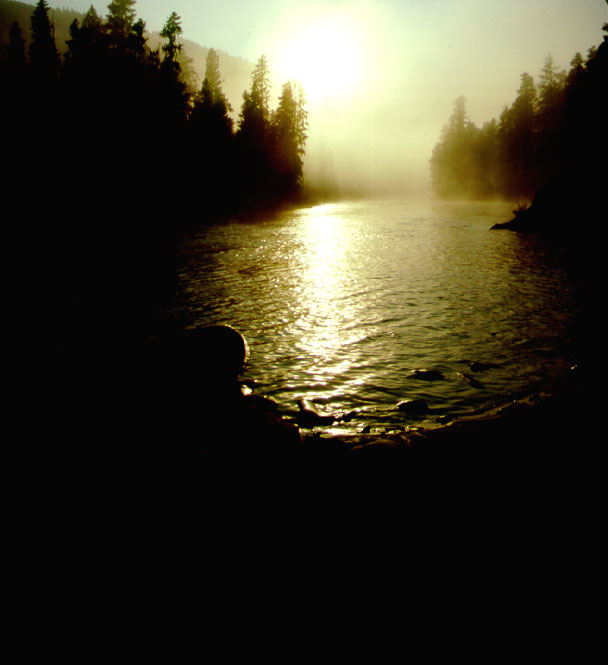
[END]

